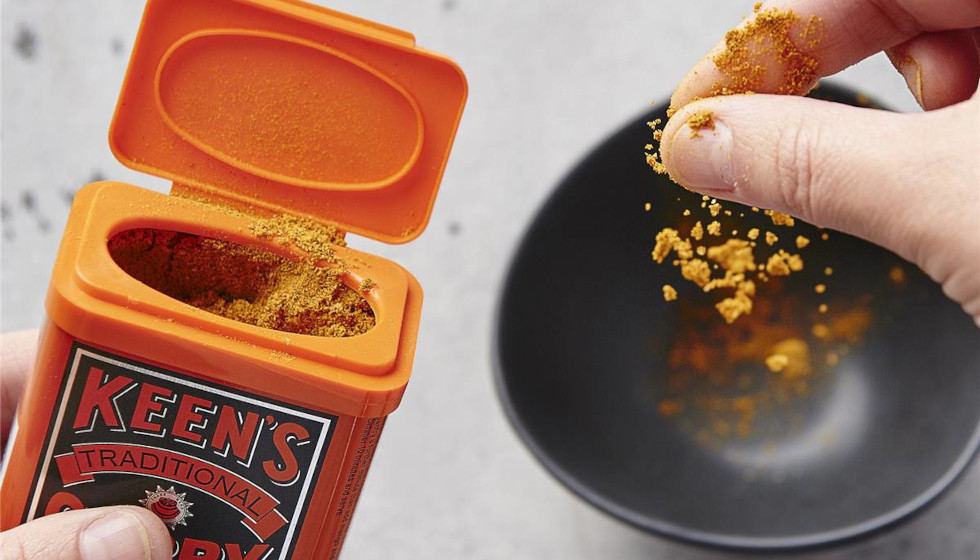A Spicy History of Hobart
by Stephanie Williams

Have you ever looked up toward the mountain and noticed big white writing on the hill at South Hobart? Dating back to 1905, the sign was a new, fandangle marketing tool for Keen’s Curry, the iconic flavouring that started right here in Hobart. We spoke with researcher Freida Moran to get the fully spicy story.
Keen’s Curry was created in Hobart by Joseph Keen and his second wife Annie. Was curry something that was widely known in Australia at the time or was it still very exotic? Yes, Keen’s was first produced by Joseph and Annie from their shop and post office in Kingston during the 1860s, as one of a range of condiments. Curry powder was frequently advertised in colonial Australian newspapers, from around the second decade of the 19th century. As a foodstuff produced through “negotiation and collaboration” (Cecilia Leong-Salobir) between British colonisers and Indian servants, curry was known across the British Empire. Curry was one way settler colonists made unfamiliar Indigenous ingredients – such as kangaroo and wattlebirds – acceptable, as a familiar taste and cooking technique. The ‘exoticness’ of curry was intentionally cultivated in advertising at different points in Australian history, as Keen’s, for example, did in the 1960s.
Do you know where Joseph’s experience or interest with curry came from? No, but I would think it was part of the broader culinary culture at the time.
What was happening around that time with food – what did a normal diet look like and was Keen’s Curry complementary to that, or a really out there ingredient!? Given the product’s success, I’d say that curry and Keen’s suited the preferred flavour profiles, cooking techniques and available ingredients of the time, and became embedded in local culinary culture, and arguably part of local identities.

There’s the large sign in South Hobart, created from white rocks that says ‘Keen’s Curry’. Was this a marketing tool?
Yes! It caused quite a stir, but was only one of several controversial marketing campaigns Keen’s produced in this era. Joseph and Annie’s son-in-law Horace Watson took over the company around the turn of the century, and became a prolific and notable advertiser. The South Hobart sign was constructed in 1905 from whitewashed stones and was said to be visible from miles away. It provoked controversy in the local newspapers, used an example of the modern “advertising demon” being “everywhere”. In 1914, another sensational promotion capitalised on fascination with Antarctic exploration, with one or two live king penguins placed in the window of a Murray Street shop bearing a sign suggesting “that any one who eats any other curry but ‘Keen’s’ is a fool”. Letters to the Mercury protested animal cruelty, but Watson asserted that the bird enjoyed salt-water swims and fresh fish, as well as the admiration of “10,000 folk”. The Keen’s Curry sign has been rearranged a number of times of the years: university students changed it to “Hell’s Curse”, and “Freds Folly”, and in the second half of the 20th century, it became a barometer for locally contentious issues, some which reverberated internationally: “No Dams”, “Gunns Lie”, and in 1994, “No Cable Car”.

The flavouring has endured. Why do you think that is? We can’t say for sure that the exact flavour profile has remained the same since the 1860s, as ingredients didn’t have to be listed. Current Keen’s advertising emphasises history, tradition and continuity of flavour, but a previous owner said there were 15 spices in the blend, whereas today there are only 9. So it may have evolved alongside our changing tastes.
What role did Hobart play in the creation and success of Keen’s Curry? I think it is really interesting to think about this from a slightly different angle – what Keen’s Curry can tell us about Hobart? I think we often think of Hobart and Tasmania as the ‘end of the world’, remote and isolated, but the fact there was an adequate supply of spices for a curry powder to be commercially blended here in the 1860s, is quite surprising (at least it was for me!). It shows that Hobart at this time was a connected node of the Empire and part of an efficient trade network. Individual spices used in blends such as Keen’s would have come from India, the Caribbean, Europe, and South-East Asia.


